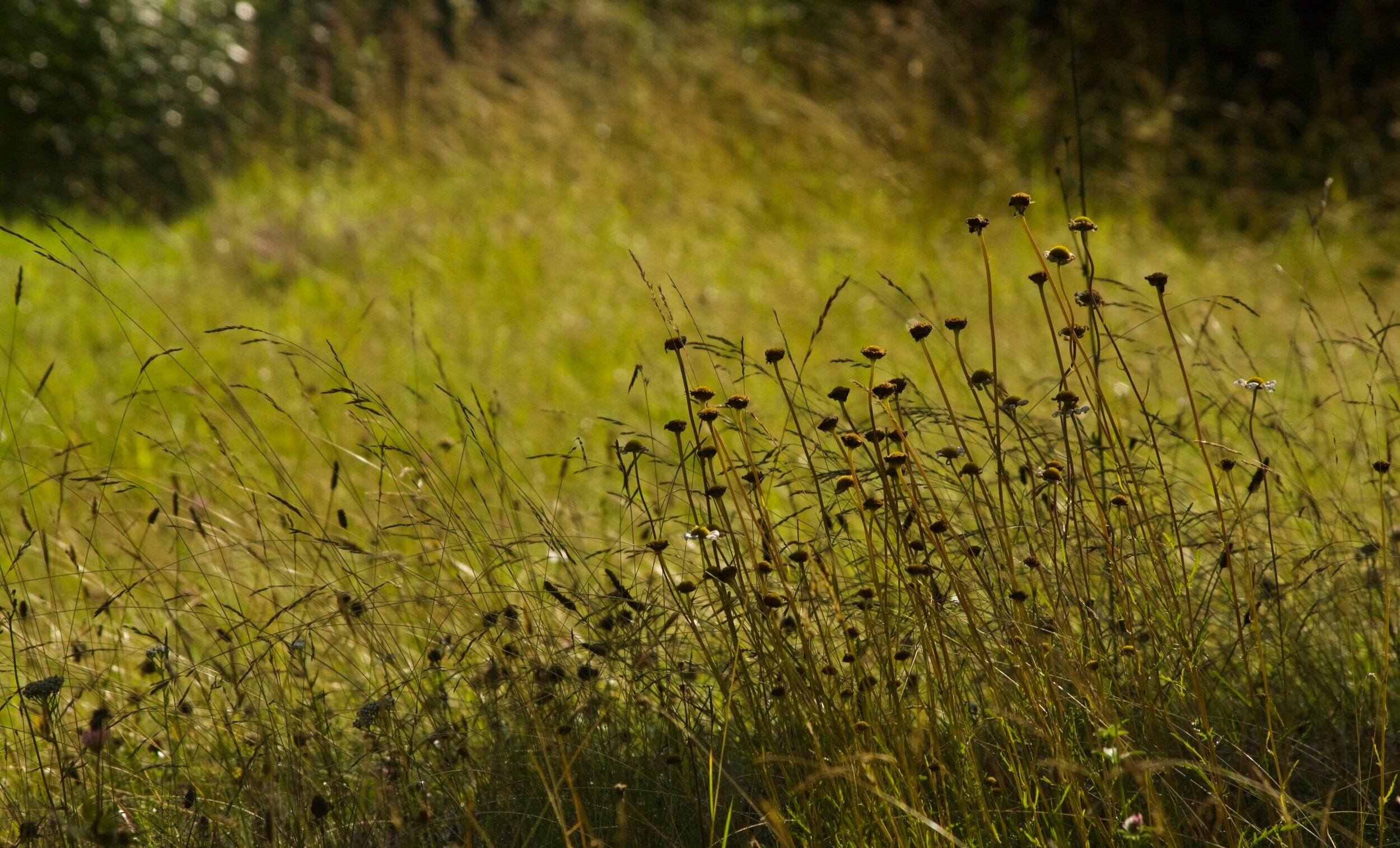
Land Management Values
The opportunity to shape a landscape is always a privilege, and one that I approach with humility. While every person’s needs and space are unique, certain values guide me in every job.
-

1. Spaces that are good for wildlife are good for people
A binary notion influences how much of our society thinks about land: there are places for people, and there are places for wildlife. There is no doubt this attitude has been incredibly damaging for wildlife, but we believe it hurts people too. The natural world is a source of creativity, joy, and abundance. For too long we have surrounded ourselves with impoverished landscapes and it is past time to start rewilding our homes and communities.
How does this show up in practice?
We focus on planting species that support local food webs, and that starts with plants that support insect populations. For plant communities to be productive habitat they generally need to be full and lush—plants spilling over into one another—and diverse in both species and structure. Having species of different size, shape, and flowering habits creates a dynamic and resilient community. Finally, we use exclusively organic methods.
-

2. The past and present landscape is the guide for future change
No site is a blank slate. Any work—be it design or management—should begin with the existing conditions, both the inspiring and the challenging. One of the most wonderful things about land is that every little nook has its own unique features and history. We think that sense of place is valuable beyond words and worth working to preserve.
How does this show up in practice?
We will spend a good amount of time in a space before putting together a plan for it. This way we can understand where—based on your needs—the opportunities and limitations are. Whether that challenge is how to balance a valuable old tree that is at odds with a desire for more open sky, or how to revive an old meadow that has lost its wildflower diversity and become thick with goldenrod, we will respect both the space’s past and your hopes for its future.
-

3. Work on land with a light touch
Disturbance is a natural component of every ecosystem, but people are the source of too much of it. We keep our disturbance of existing landscapes—including flora, fauna, and abiotic elements—to a minimum. Gardening and landscaping are by definition intervening in the landscape, but our goal is to get as much value out of every disturbance as possible.
How does this show up in practice?
We constantly ask ourselves if what we’re doing is necessary work. Does an old stump need to be ground up? Or could we just plant around it? Will digging this weed up by the roots all at once be worth the disruption? Or will repeated cutbacks work out better in the long run? Do we need to excavate an old gravel driveway? Or could we use plants that will thrive in rocky soil instead? Sometimes our desire to remove the warts of past landscape decisions lead to disturbing things all over again. We aim to make all my work intentional.
